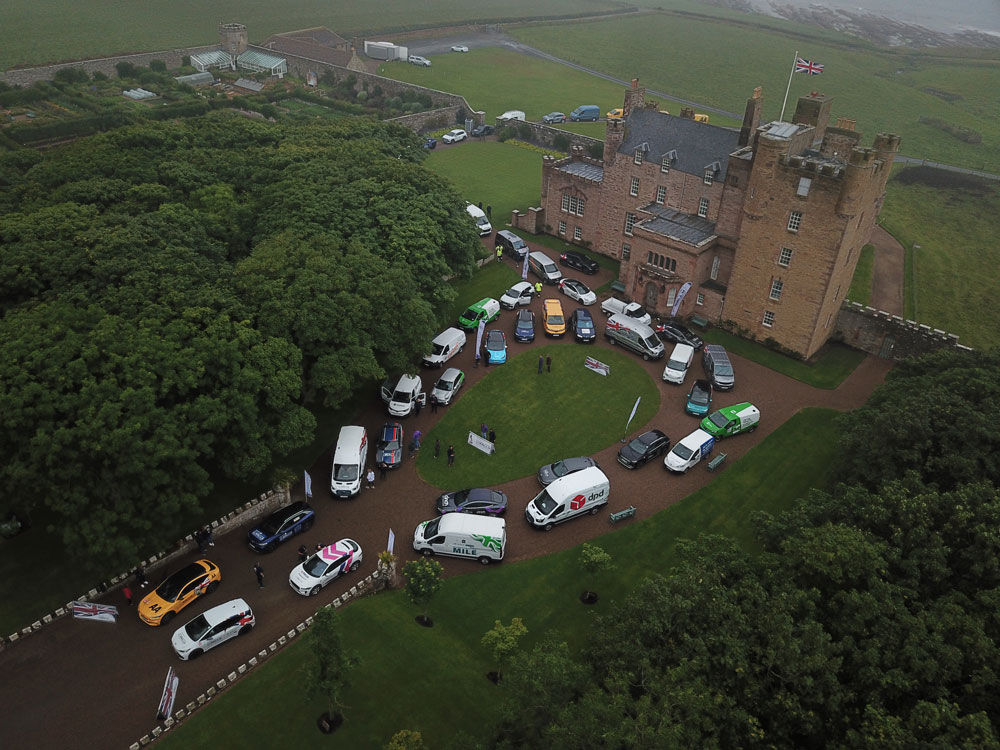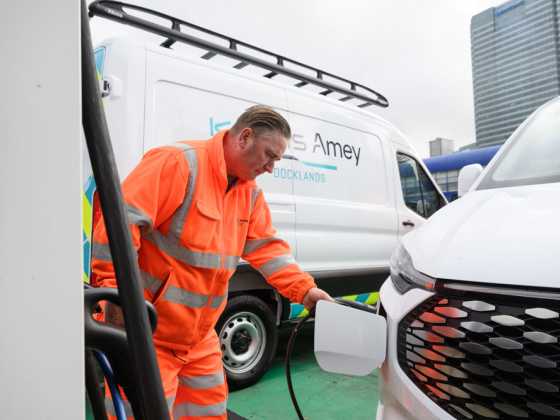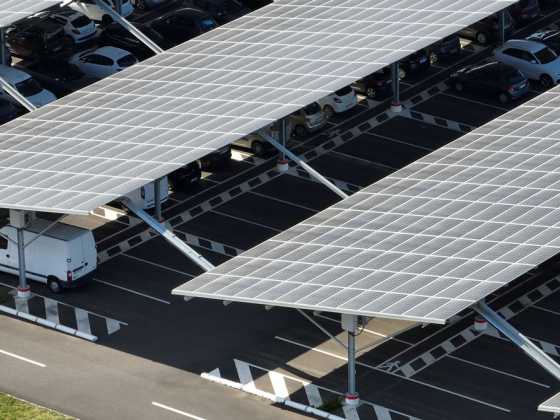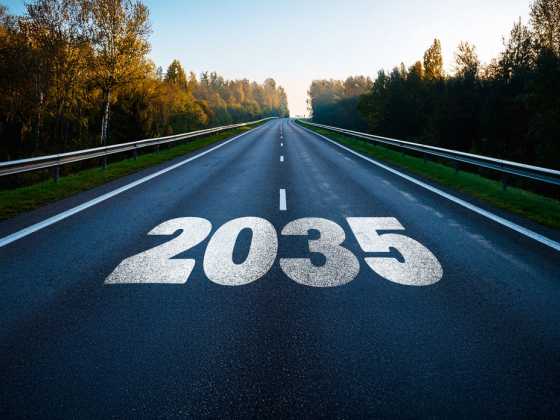A cause for collaboration!

Image courtesy of Webfleet
Over 1,200 miles, through three countries, and witnessing impressive charging innovation, almost 50 electric vehicles drove the length of Britain during the 2022 Great British EV Rally, sponsored by Lex Autolease. Richard Gooding was there to experience the technology, collaboration and camaraderie
Following the overwhelming success of the EV Rally Of Scotland (EVROS), organised by GREENFLEET against the backdrop of the COP26 in November 2021, there was clear impetus for an even larger event to demonstrate EV charging infrastructure, as well as clean and innovative vehicle technology.
In July 2022, the baton passed to the Great British EV Rally (GBEVR). Showcasing electric vehicle charging infrastructure across the whole of mainland Britain, from the tip of northern Scotland down to the southwest corner of England, GBEVR was sponsored by the UK’s leading leasing specialists, Lex Autolease, and Team Lex was headed by Chris Chandler.
Demonstrating the roles that EVs can play in UK fleets – that no matter what the job, there is likely an EV available that can perform the task – even from the outset, GBEVR was on a scale not yet seen for a GREENFLEET or ‘Fleet EV’ event, and much larger than EVROS. Whereas EVROS witnessed 23 EVs taking to the roads of Scotland, double (46) drove the length of the country as part of GBEVR.
The rally began at the Castle & Gardens of Mey on 4 July and finished at Land’s End four days later. Ten checkpoints, coupled with six endpoints, punctuated the five-day road trip, with cars heading along the north coast of Scotland and down the western side of the country, the vans driving south down the ‘Electric A9’ and the eastern side. Both routes joined up on day three to continue the journey to Cornwall.
Why an electric vehicle rally?
The UK needs to show why it aims to lead the world in embracing the very latest in innovative practices. ‘E-mobility’ and the decarbonisation of transport is seen as a key element to help shift towards net zero and a cleaner future, and when it comes to EVs and infrastructure, the UK fleet sector has a huge role to play.
GBEVR also showcased the supporting services and solutions that make EV use a very viable option for any UK fleet, including breakdown, recovery, maintenance, telematics, tracking and even driver training. Following the EVROS event, some key partnerships were renewed. AA was the roadside assistance partner and Maxus the event logistics vehicle partner. Daily driving training and tips were provided by Drivetech, and LOCALiQ, part of Newsquest, was the media partner. Finally, Webfleet Solutions took the role of technology partner (see ‘Crunching the charging numbers’), monitoring the teams during the event. Innovative tracking technology was fitted to a participating vehicle from each team with progress broadcast online over the route. New 2022 partnerships included event vehicle partners BCA and cinch, vehicle cleaning partner Karcher, and Siemens.
Collaboration a key factor
Key to GBVER was collaboration, and as well as the partnerships, a key charging cooperation was put in place by Paua, with its Paua charging card. Drivers used the card to charge their vehicles when at a charging point, with charging providers ChargePlace Scotland, Swarco and Gridserve – permitting use of its Electric Highway hubs – all collaborating to provide drivers with free charging.
Thanks to the wide expertise of these charging partners, the 1,200+ mile GBEVR route was able to take in a few of the UK’s most iconic landmarks, and use charge points as official checkpoints.
Host authorities played their part, too, with the staff and facilities of Dundee City Council, Leeds City Council and West of England Combined Authority welcoming teams and drivers at various stages throughout GBEVR. Zap-Map provided access to its ‘Premium’ online charging network maps for the duration of the event.
Navigating the route
The GBEVR idea was a relatively simple one. Featuring teams of drivers and ‘e-navigators’ comprising many of the UK industry’s biggest names in either electric cars or electric commercial vehicles, drivers stopped at predetermined checkpoints each day en-route to that day’s final destination. At each checkpoint they would take a picture to show they had visited – scanning a QR code to ‘check-in’ – and to share across social media platforms, using pre-defined hashtags. Each vehicle carried eye-catching branding, and throughout the event, motoring journalist and presenter John Curtis, and EV adventurer Chris Ramsey were reporting on the drivers’ progress, broadcasting live across social media.
Day one saw the teams set off from Castle & Gardens of Mey in Scotland, before hopping the short distance across to John O’Groats near Wick to take in the first notable landmark, and of course, the traditional starting point for any north to south UK driving event. There were some very brightly coloured vehicles on the starting grid for John Curtis to meander his way through on the grid walk; these very same vehicles brightening up a very cloudy John O’Groats, ready to be waved off by Chris Ramsey.
Champion partner teams driving GBEVR included the AA, bp pulse, char.gy, DPD UK, Drivetech, Ford Pro, sustainable two-person delivery business Green 2, Kärcher, Maxus, Mitie, National Grid, OVO Energy, and Paua.
As well as seeing key collaborations renewed, GBEVR also welcomed back a group of friendly rally ambassadors into its embrace, all drivers who had also taken part in EVROS last year. Guinness World Record holders Kevin Booker and Fergal McGrath were in a Kia EV6 representing Team BP Pulse, while Sara Sloman and Linda Grave were in a Volkswagen ID 4 driving for Team Kärcher. The Jaguar I-Pace of Sam Clarke represented Team Lex, and the BBC’s Paul Clifton – also part of the Guinness World Record breaking trio – drove for Team National Grid alongside his daughter Frankie. EV commercial vehicle man Paul Kirby was ensconced in Maxus eDeliver electric vans for the event’s duration.
First stop for the cars was Durness, followed by Fort Augustus at one end of Loch Ness, where teams eyeballed the commercials at Dores Beach, at the opposite end of the famous stretch of water. The cars carried on to Fort William and Oban, while the van drivers ended their day at the Dundee City Council charging hub in association with Swarco, before going onto an evening reception held by the council.
The cars departed from Oban and Fort William on day two, covering 333 e-miles to their overnight half at Cheadle where Lex Autolease welcomed them for a networking barbecue at its Heathside HQ. The vans meanwhile left Dundee in the early morning, passed the Angel of the North, and finished up at the pioneering Stourton Park & Ride, operated by Leeds City Council, which features huge solar, battery and energy storage facilities.
Coming together
Day three was a one of coming together. Both routes converged at Rockingham, home to BCA and cinch, for a day of electric vehicle-themed festivities. From here, the rally stayed ‘as one’, journeying on to the bp pulse HQ in Milton Keynes, where drivers could charge and enjoy refreshments.
A big highlight for most drivers was a visit to the Gridserve Electric Forecourt in Braintree, Essex, which features 36 high power (up to 350kW) chargers.
It wasn’t the only EV charging innovation seen that day, as all the EVs took a trip to Woodford, East London to witness the char.gy wireless charging trial which is underway. Converted Renault Zoes use wireless underground charging, aiding drivers with access and home charge point issues.
The Bristol & Bath Science Park operated by the West of England Combined Authority was the last destination of the day.
The final day began with the teams driving over Cardiff Barrage which isn’t usually open for vehicle traffic. From there, many teams converged onto the Moto Exeter services to use the Grideserve Electric Highway, before heading down to Land’s End to cross the finish line and pick up a commemorative medal.
Webfleet Solutions’ data league table crowned Kevin Booker and Fergal McGrath the overall efficiency winners, scoring 5.0m/kWh, beating the official WLTP 3.6m/kWh figure of their Kia EV6 by some margin – an improvement of 139 per cent. Findings indicated that the running costs of the car using bp pulse public 150kW DC chargers came out at £0.09/mile, around half that of an equivalent petrol ICE car over the same distance.
Richard Parker, corporate sales manager, Webfleet, said: “Equipping drivers with the skills needed to drive electric vehicles is paramount to the long-term success of fleet electrification. A lack of requisite EV knowledge and driving skills can lead to cost-saving benefits and operational performance being comprmised.
“This message was reinforced during our participation in the GB EV Rally. EV data insights, generated by Webfleet, proved crucial to educating our team of EV drivers, tackling the journey in a Nissan e-NV200. Access to the performance and energy consumption intelligence enabled them to achieve an impressive 3.9 mile per kWh and a 160-mile range on the motorways en route.”
Collaboration is key to EV switch
Over 1,200 miles, GBEVR established new friendships, rekindled old ones, and brought people together with a rewarding sense of camaraderie. “Throughout the week, relationships between all the teams went from strength-to-strength, with an overwhelming feeling of collaboration and celebration once we all finally crossed the finish line,” said Parker. Lorna McAtear, Team National Grid, agreed. “What we found among the vans was that the camaraderie was definitely there. We all just helped each other out.”
Drivers were posting charger service updates on a dedicated WhatsApp group, helping each other to avoid charging hot spots and ‘not spots’.
Sara Sloman from Team Karcher, meanwhile, commented on the ease of the Paua roaming card. She said “With the Paua card roaming and interoperability on the Great British EV Rally has elevated the charging experience for non-EV drivers to just not worry or even think about it. Just swipe the card and go!”
Inevitably, the rally did highlight areas that could be improved on the charging network. Lee Sibley and Jason Atkins from Team Green 2, highlighted the need for separate commercial vehicle chargers, as some of the issues the team dealt with were a shorter range (than cars), smaller spaces to park in when charging, and competing for availability of chargers across the public network.
So while there is still work to be done, GBEVR helped bury the myths that EVs don’t have the range or capabilities to become an integral part of a fleet’s DNA, and that EV charging infrastructure isn’t in place.






